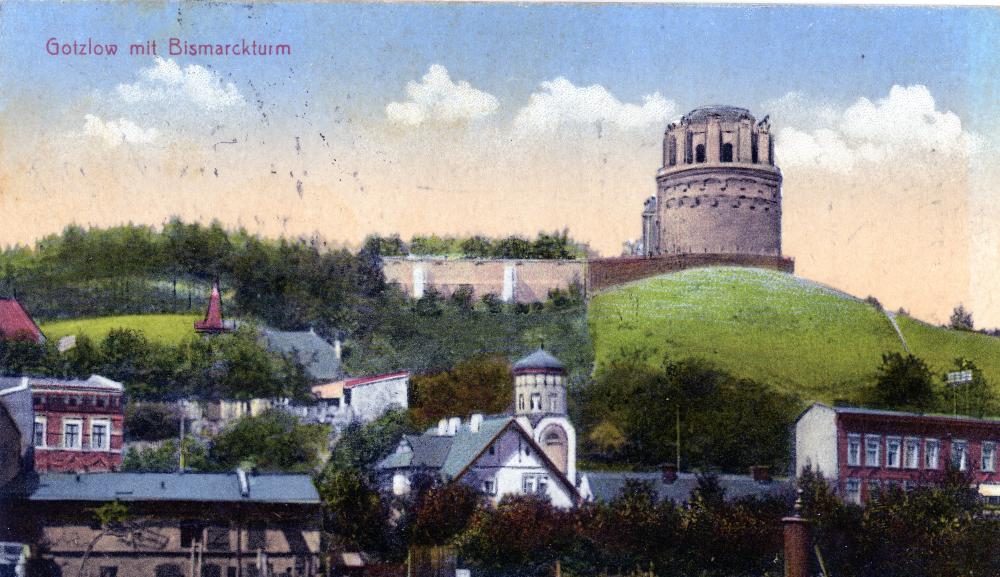Trails in Alt-Bucholz

Alt-Bucholz Folwark
And the earliest, dating back to the 18th century, the first general tenant of the Stettin district, War and Domain Councillor Winkelmann, established the settlement of Buchholz as a sheep and ram breeding farm near the Zabelsdorf (Pol. Niebuszewo) folwark. In 1885, the estate consisted of 1 residential building with 2 farm buildings. The estate was home to 4 families, a total of 20 people. The land belonging to the estate covers 416 morgas of land, including 350 morgas of arable fields, 23 morgas of meadows. 2 morgas are occupied by a residential building and garden, 20 morgas — roads and ditches, and 20 morgas — wasteland. In 1936, to commemorate the nature convention, a large granite erratic boulder found nearby — 270 centimeters high and 680 centimeters in circumference — was placed north of the pavilion, with a quote from Schiller engraved on it: “Nature is an infinitely divided God”. A large boulder, called Bukowski Boulder, now submerged in the surrounding lush vegetation, still testifies to the former splendor of the place. During World War II, the farm buildings were not destroyed. The abandoned ones were demolished after the war — for bricks. For a while, the artificial pond was used to breed carp. Of the entire complex, only the foundations of the residential building made of erratic stones, the concrete fountains, the bridge and also the retaining walls and pillars of the pond pavilion have survived to this day.
Kaffeeberg Restaurant
Kaffeeberg Restaurant, was located in the Warszewski Forest, at the top of a hill called Café Hill (Ger. Kaffeberg).
It was built in the late 19th century in a rustic style. Its owner was the Stolzenhagener Bauerngenossenschaft, and its innkeeper was Max Engel, who also managed the Forsthaus Julo restaurant. From 1915 to 1916, Gustav Fensch served as innkeeper. Since 1930, Helene Beyer has held this position.
During World War II, the Lager Kaffeberg labor camp for workers employed by Luther und Co. was set up in the restaurant buildings. The buildings survived intact until the end of the war, and after 1945 were demolished for bricks.
Etablissement Weinberg Restaurant
On the lower terrace of Green Hill (Pol. Zielone Wzgórze), the Etablissement Weinberg restaurant was built in the late 19th century. In 1897, the plot of land was bought from shipowner Oscar Brauenlich for the sum of 24,000 Deutsche Marks by August Bandoli, who, after leveling part of the hill, erected a large restaurant here.
It was later enlarged by one more building, located further north. It was a large villa that, in addition to the bar, housed a spacious hall with a small stage, which was conducive to holding more elite meetings. Good publicity, high quality of services and an excellent location have made Etablissement Weinberg one of the most popular resting places for residents of Szczecin and the surrounding area. From 1904 to 1917, the establishment was run by Oskar Schulze. In 1930, Marta Siebart née Lange of Szczecin is listed as the owner with Friedrich Siebart as the innkeeper and Franz Siebart as the manager. In 1934, the establishment was leased to Willi Kutz. From 1935 until the end of World War II, Franz Siebart was both the owner and the innkeeper. The establishment was not destroyed during the War, however, it was demolished after the War for building materials.
Forsthaus Julo forester's lodge
Forsthaus Julo, a forester's lodge and restaurant, was established on Forest Hill (Pol. Wzgórze Leśne) on 14 August 1842, at the initiative of the City Beautification Association (Pol. Stowarzyszenie Upiększania Miasta). Since this provoked opposition from local farmers, an agreement was made with them on 2 April 1843, according to which Forest Hill was made available to tourists.
The condition was to maintain the forest character of the site and prohibit the erection of further buildings. The attractive location of the premises made tourists eager to visit. There were charming paths leading to it and access by carriage was possible from ul. Tęczowa and ul. Koszalińska streets. The restaurant was famous for excellent food, and the shooting range and a café garden with a games area added to the attractiveness of the establishment.
The premises belonged to the Stolzenhagener Bauernverband association, later renamed Stolzenhagener Bauerngenossenschaft.
It survived the War, however, the undeveloped buildings were devastated and demolished. Today, the only traces of Forsthaus Julo are the stairs and concrete foundation fragments at the top of Forest Hill.
Upper Vineyard — Green Hill (Pol. Winnica Górna — Zielone Wzgórze)
Today's Green Hill, formerly known as Vine Hill (Pol. Winna Góra / Ger. Weinberg), is an area on one of the hills of Gocław, where vines were grown from the Middle Ages to modern times. The presence of vineyards here is linked to the appearance of the Cistercian order, which in the 13th and 14th centuries brought settlers from the Rhineland, who specialized in viticulture, to the area.
Historical sources mention the existence of a Gocław winery as early as the time of the Duchy of Pomerania. Later, during the reign of the Swedes (1637–1720), the first maps showing the location of crops were created, and from them it can be read that in 1692 the vineyard supervisor was Commissioner Klinkowstom. Later, already under Prussian rule, in 1730, the vineyard was overseen by master winemaker Matthias Grell.
